
|
We have all grown up on stories like 'The three little pigs' and 'Little red riding hood'. These stories, and many others like them, gave us a mental picture of the wolf as a scary beast, one that won't hesitate to attack humans. The truth is actually very different, because wolves will almost never attack a human, and while they are fierce predators, they are also beautiful, loving, loyal and smart members of the dog family, and are a proud product of mother nature. In this post, you will see the different sub-species of wolves and their beauty, as well as learn some very surprising and interesting facts about one of the worlds' most fascinating predators, that gave us our best friend the dog. |
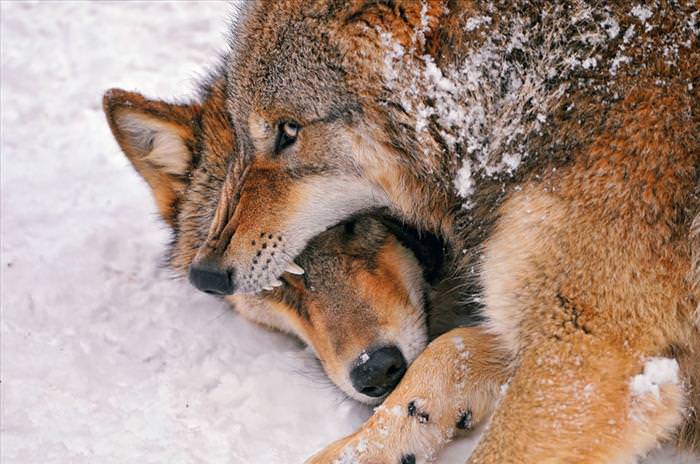 |
| Wolves have had a bad name for centuries, a reputation that many claim was started by the Brothers Grimm, building on Aesop's fables and other mythological legends. Despite their fearsome reputation, wolves almost never actually attack humans. |
 |
| A wolf on the hunt, Netherlands. The gray wolf is the most common type of wolf you will meet, and is the largest animal in the 'dog' family. |
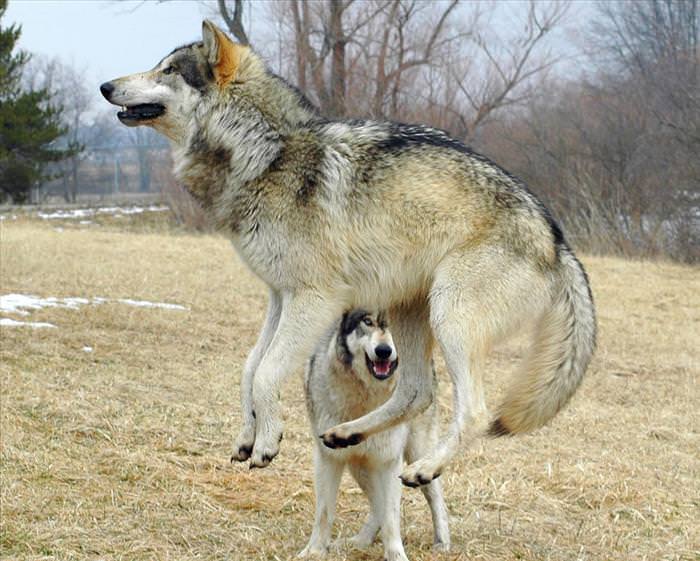 |
| Wolves are very social animals, and we can see where dogs got their love of play. They show each other affection and loyalty, and are very intelligent animals. |
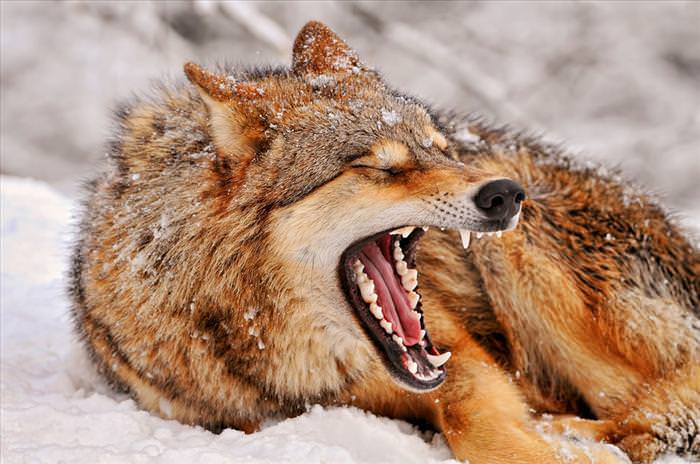 |
| These fearsome teeth are 42 in number, although wolves spend very little time chewing, and can consume up to 20 pounds of meat at each feeding. |
 |
| Wolves are incredibly fast runners and can reach speeds of 35-40 mph! They also have amazing endurance, and can trot at a pace of 7-9 mph for hours at a time, sometimes covering as much as 55 miles in one night! When in packs, wolves can hunt on an area as big as 600 square miles. |
 |
| A wild wolf in Umbria, Italy. |
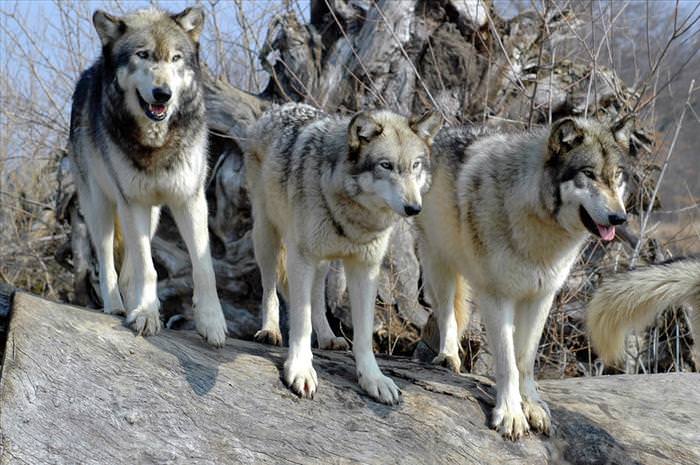 |
| Wolf packs always have a leader, the 'Alpha' male. A little known fact is that there is usually also a female 'Alpha' in the pack. These wolves are sniffing for prey; a wolf's sense of smell is so good they have been known to smell prey from more than a mile away! |
 |
| Wolves use howling for several purposes: To assemble the pack together (for the hunt), to raise an alarm (usually around the where the den is), to locate each other when lost in unfamiliar places and to communicate across great distances. The howl usually changes frequencies but keeps the pitch constant. |
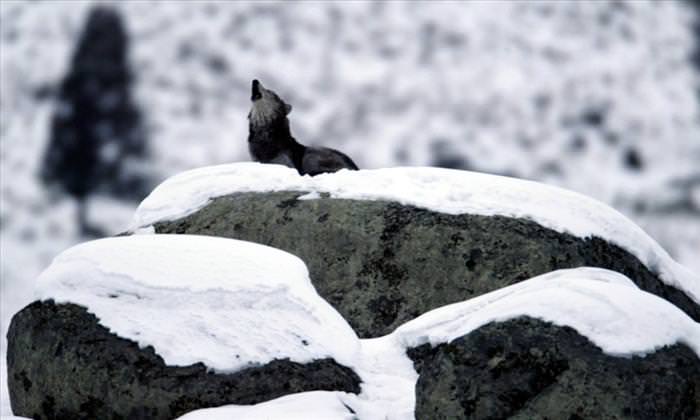 |
| The howling is so effective that on a quiet night, it can be heard from as far as 120 miles away. Contrary to popular opinion, although wolves will howl more during a moonlit night, they do NOT howl at the moon itself. |
 |
| The gray wolf used to be very common around the world, living everywhere but the most extreme ends of the earth. |
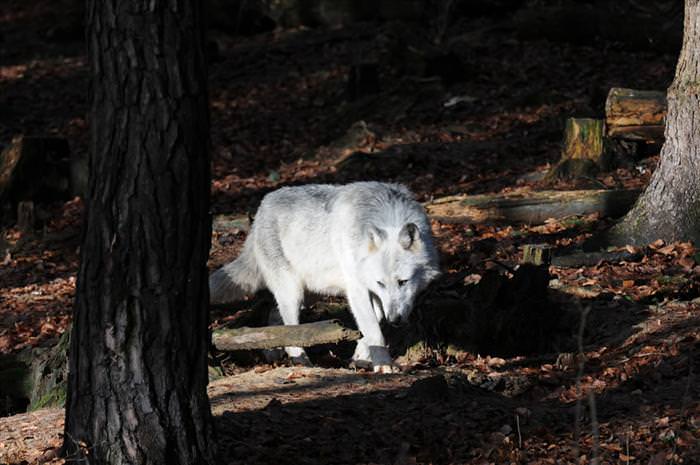 |
| A close-up of a 'red' wolf. Some biologists believe the red wolf to be a wolf/coyote hybrid rather than a full wolf like the gray wolf, but most agree they act more like wolves than coyotes. |
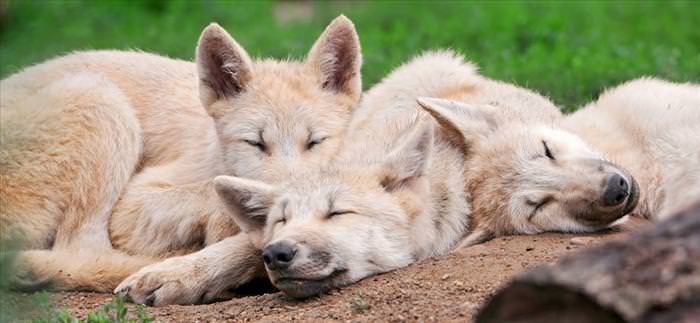 |
| A group of arctic wolf pups taking a nap. Most wolf females give birth to about 4-6 puppies per litter, mostly between April to June. It takes a pack to raise wolf pups, and indeed the entire group will take part in taking care of them. If the mother goes hunting, for example, another pack member will become their 'babysitter' until the mother returns. Now that's team work. |
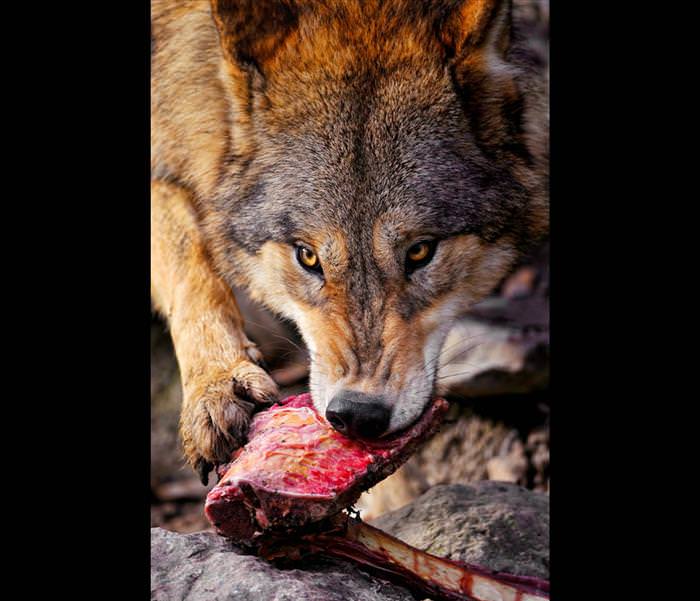 |
| A meal earned. One of the gray wolf hunters getting his share. |
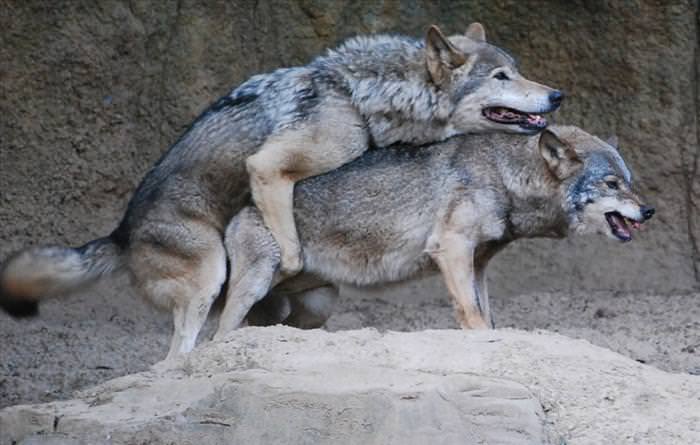 |
| Wolves do mate for life. But contrary to some overly-romantic notions, if one of the pair dies, the other will find a new mate and won't become a lone wolf. |
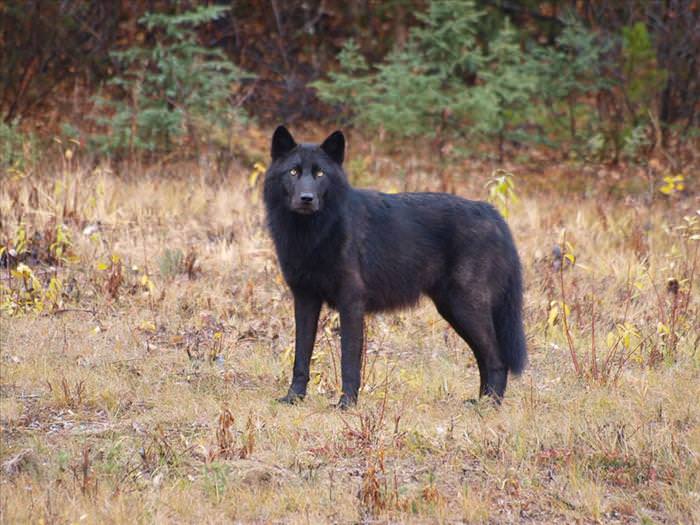 |
| A black wolf at the Indian reserve of British Columbia, Canada. This wolf seems unafraid of the photographer and is calmly studying this bizarre creature. |
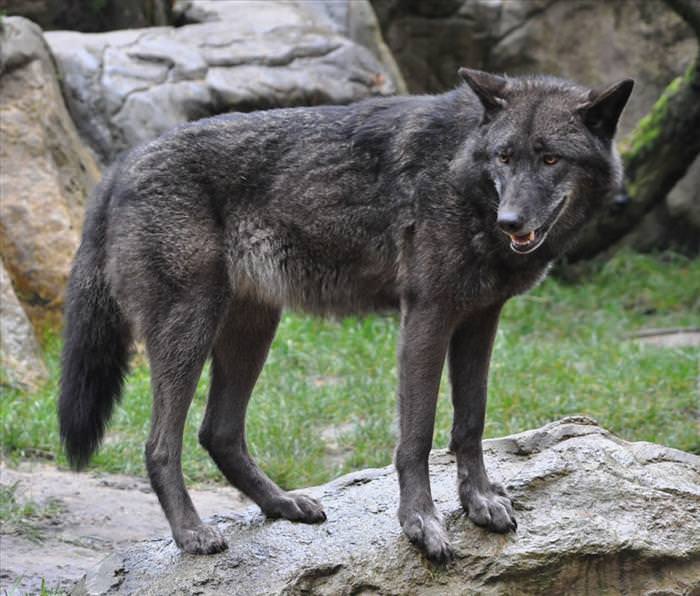 |
| An Eastern wolf in the Luneburg Wildlife park in Germany. |
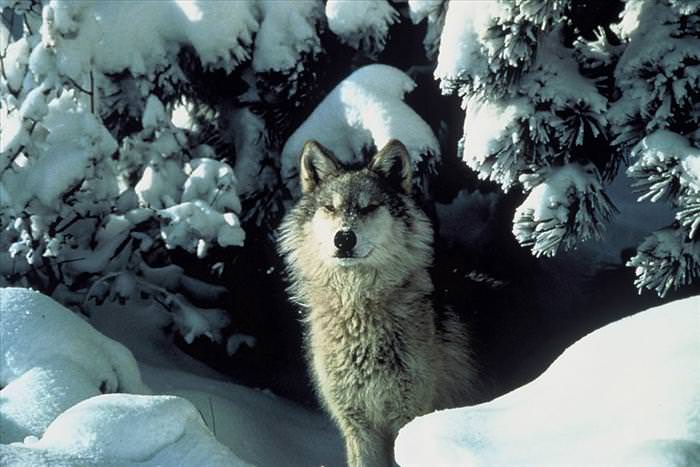 |
| A Northern Rocky Mountains wolf, a subspecies of the gray wolf, and one of the largest types of gray wolf, reaching about 135 pounds in weight. It is lightly colored, to blend into its snowy surroundings. |
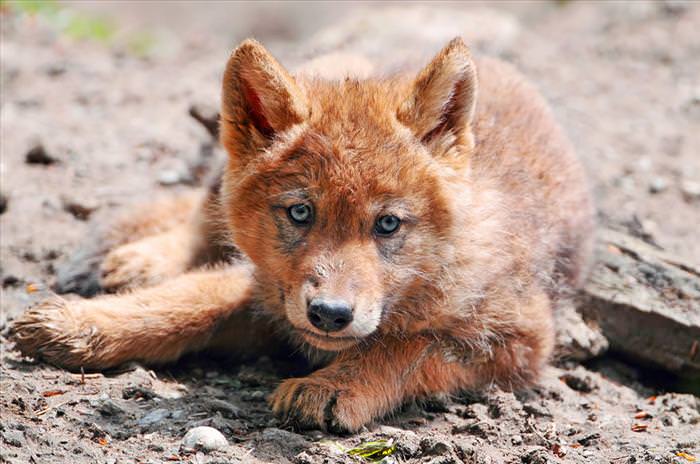 |
| A red wolf pup. Pups do not leave the den until they are at least one month old, and even then they will stay close in case of danger. It will start traveling with the adults and learn how to hunt when it is about 7-8 months old. |
 |
| Wolves in Yellowstone park hunting a huge buffalo. According to Yellowstone trackers, they estimate that wolves make about 300-400 kills every year, which are about 78% elk, 4% bison and 5% deer, with a large variety of other animals (including 4% coyotes) making up the rest. When it comes to the giant and dangerous prey that is the bison, wolves will usually go for calves, unless challenged by the bull. |
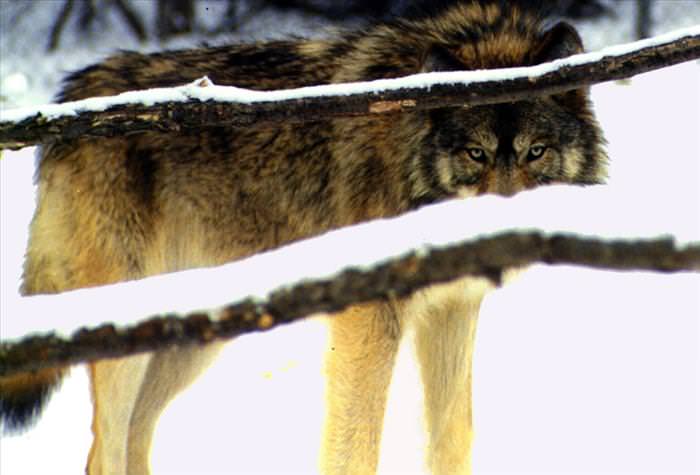 |
| The eyes of a predator. Humans have long feared this expression, and have integrated this fear into fairy tales and folklore, making wolves evil villains. Tragically, this has led to the merciless hunting of thousands of wolves, for no good reason. |
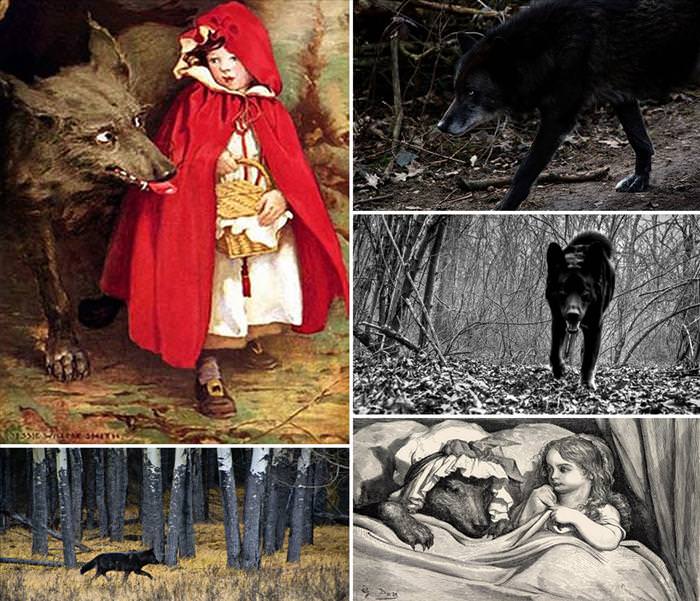 |
| The big bad wolf appeared in 1697 with the story of little red riding hood. This story saw a huge increase in wolf hunting during the 18th and 19th centuries, and is directly responsible for the decimation of many wolf populations in Europe and even the US. |
 |
| A Eurasian (subspecies of gray) wolf. This subspecies is thought to be especially intelligent, and is also one of the biggest wolves. They mostly live in cold climates, including North America, Europe and Northern Asia. |
 |
| A gray wolf howling on top of a snowy hill, UK Wolf Conservation Trust Reserve. |
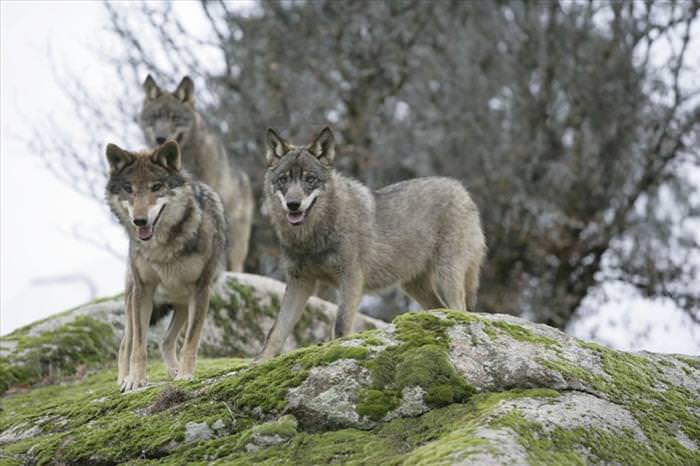 |
| Iberian wolves. Distinguished by the white stripes on their snouts and the black marks on their front legs. These are smaller specimens of wolves. |
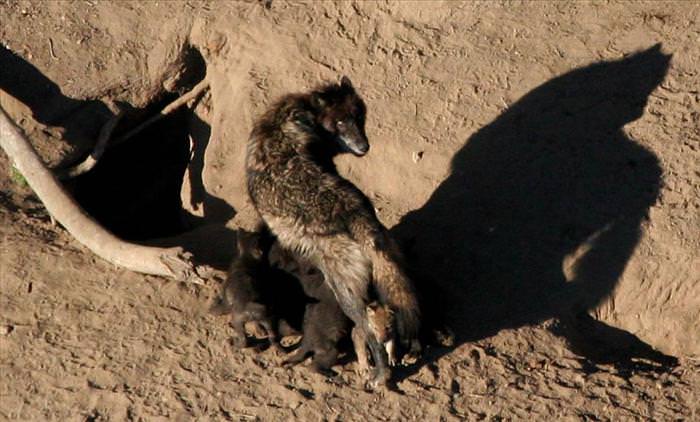 |
| A wolf guarding her pups while they feed at Yellowstone National Park. |
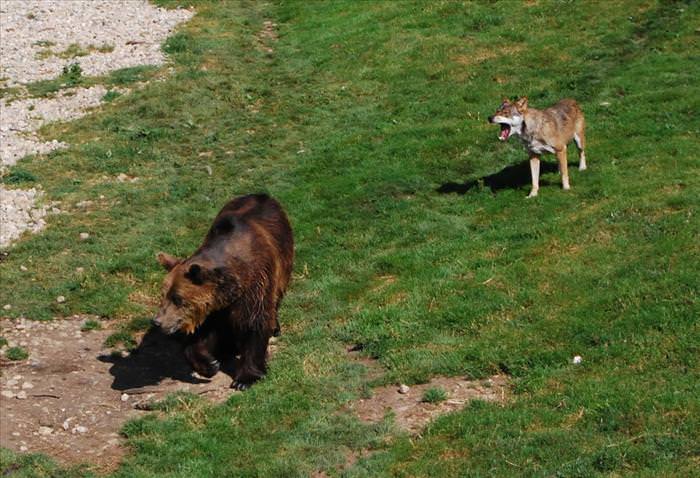 |
| Wolves are very territorial, and while this wolf wouldn't dare attack this bear on a normal day, they will track it to make sure it doesn't come too close to the den, until it leaves their territory. Shot in Juraparc, Switzerland. |
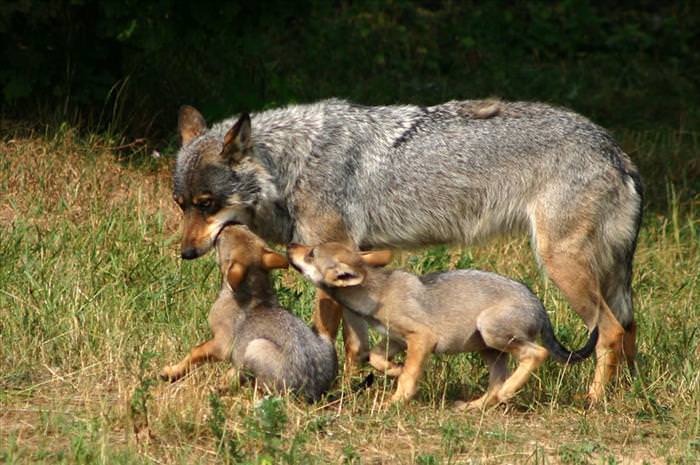 |
| Baby wolves are born with no defenses at all, unlike herbivores that can usually walk almost immediately, wolves are born blind and need the pack to take care of them until they become adults, at around 10 months of age. |
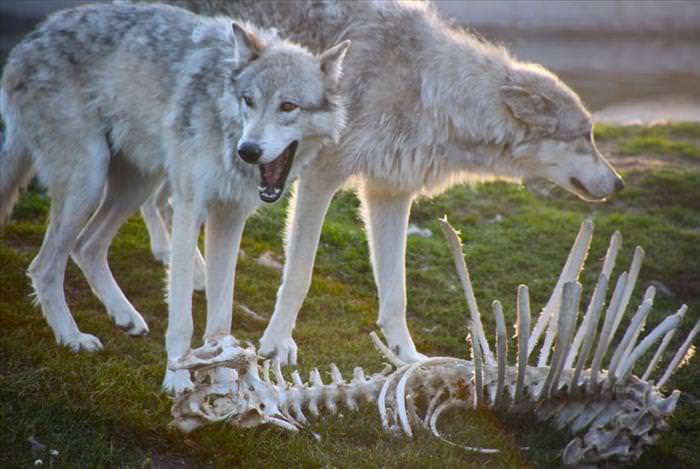 |
| 'Hey, where's the rest of it?' Gray wolves standing over bones. |
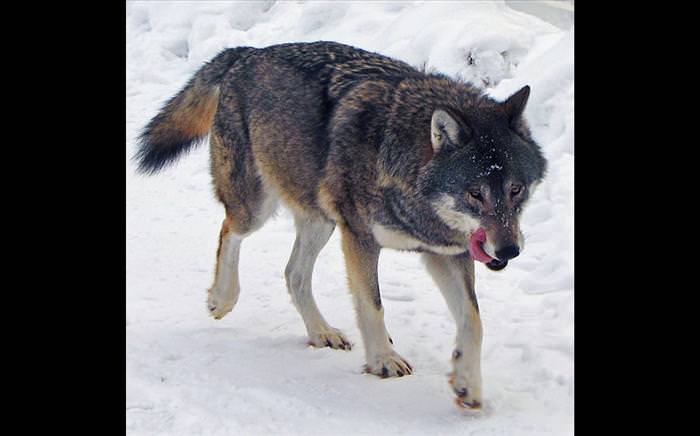 |
| Eurasian wolf, Sweden. It is thought that the wolves in Europe and those in North America evolved around the same time - 150,000 years ago. |
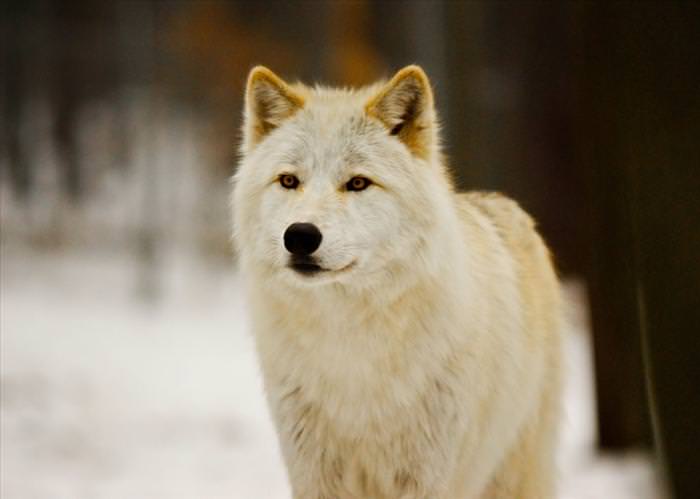 |
| The beautiful arctic wolf is medium sized for a wolf. This one was photographed at the Lakota Wolf Preserve in New Jersy, US. |
 |
| Wild wolves watching intently in Juraparc, Switzerland. |
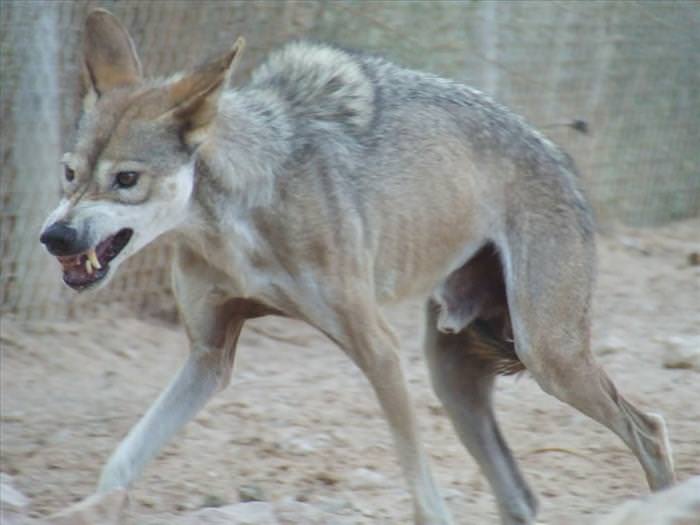 |
| The desert inhabiting Arabian wolf is a small breed. This one is in a defensive position, with its tail between its legs, ears flattened backwards, and snarling for all its worth. Aggressive wolves will move slowly and deliberately, raise themselves up high to look bigger and raise the hair on the back of their neck for the same reason. |
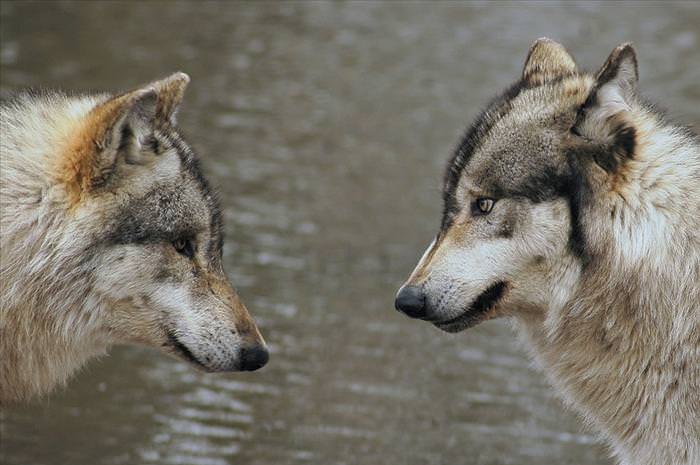 |
| A wolf face-off. These wolves are either communicating or warning each other. |
 |
| Humans have long made up stories about the dreaded 'werewolf', or 'Lycan'. Some conjecture that werewolves were used to explain serial killings. This myth was also responsible for the death of many wolves by human hands. |
 |
| A white wolf on the green background of the forest. A beautiful animal. |
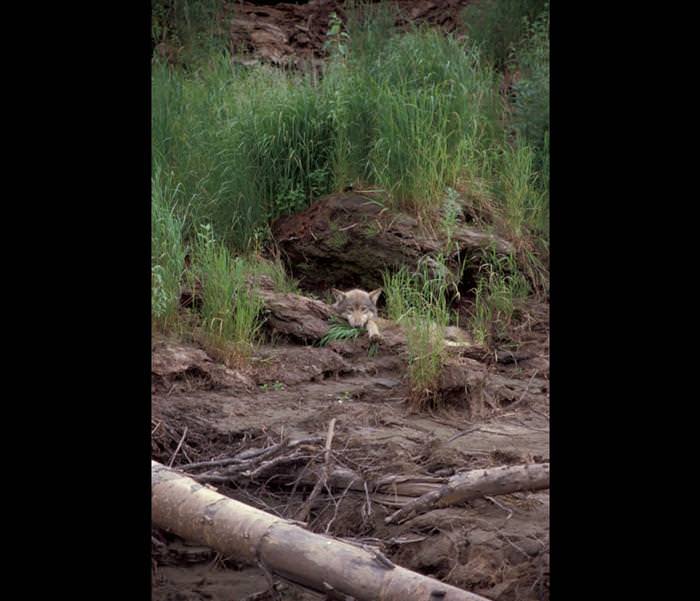 |
| A wolf pup 'chilling out' in front of its den. Still not old enough to hunt with the adults or be far from the den. |
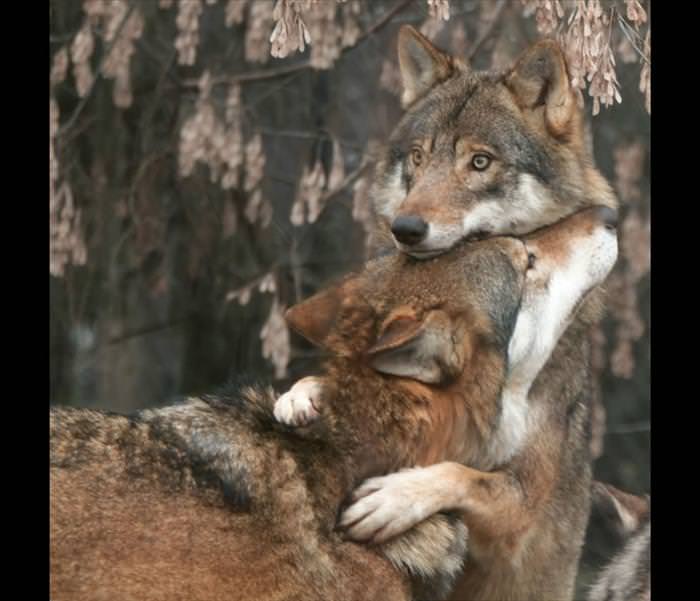 |
| A big warm wolf hug Rotterdam Zoo, Netherlands. |
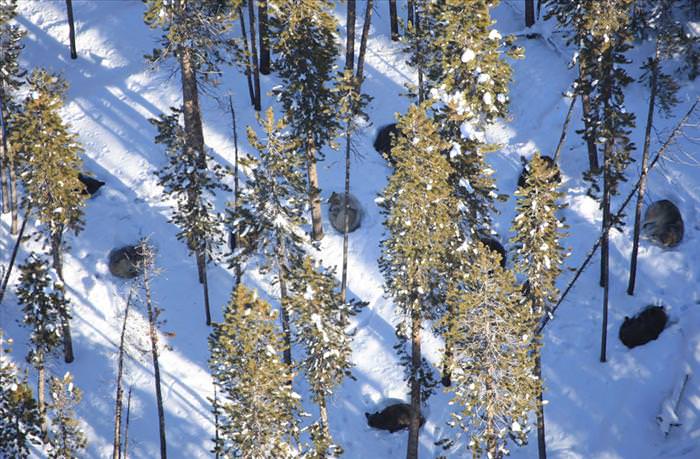 |
| Wolves will sometimes dig in the snow for makeshift beds. These wolves in Yellowstone park have done just that to rest in the snowy forest. |
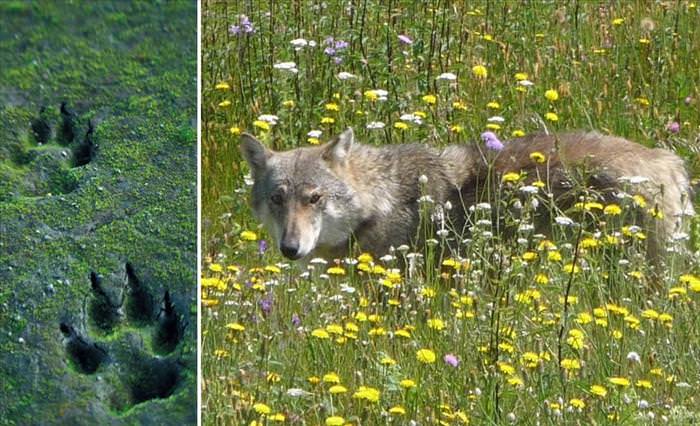 |
| Wolves have deceptively large paws (which helped fuel the 'werewolf' myth). Their footprint easily reached 5 inches long by 4 inches wide (13 cm long over 10 cm wide). On the left is a paw print in sand, and on the right is a lone wolf enjoying the wild flowers of spring. |
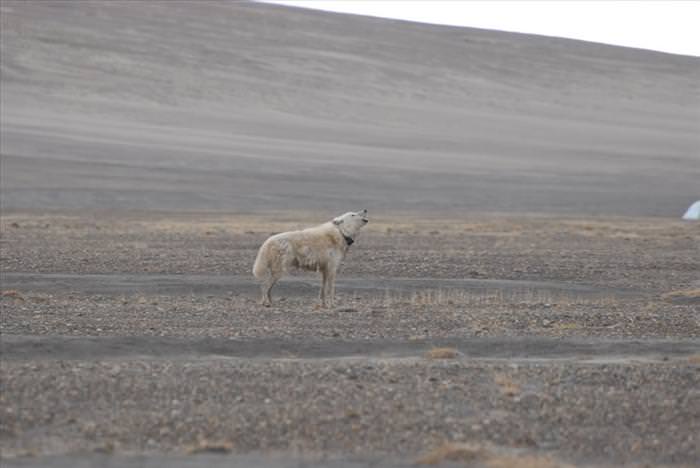 |
| A wolf named 'Brutus' by tracking scientists, is howling for his mate at the north pole, as he leaves the pack hunters and returns to his den. This may be a way for the wolf to check if its mate is 'home'. |
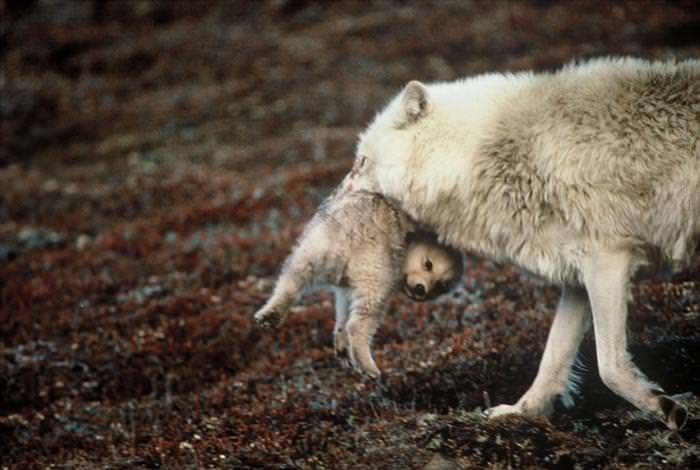 |
| When a naughty pup gets too far away from the den, the mother will find them and carry them back. This wolf pup doesn't seem too happy about it. |
 |
| Wolves over what was once a deer, but now is supper. Wolves are fierce, but according to statistics, you have a better chance of getting hit by lightning than being a human attacked by wolves. They will usually flee at the sight of humans. |
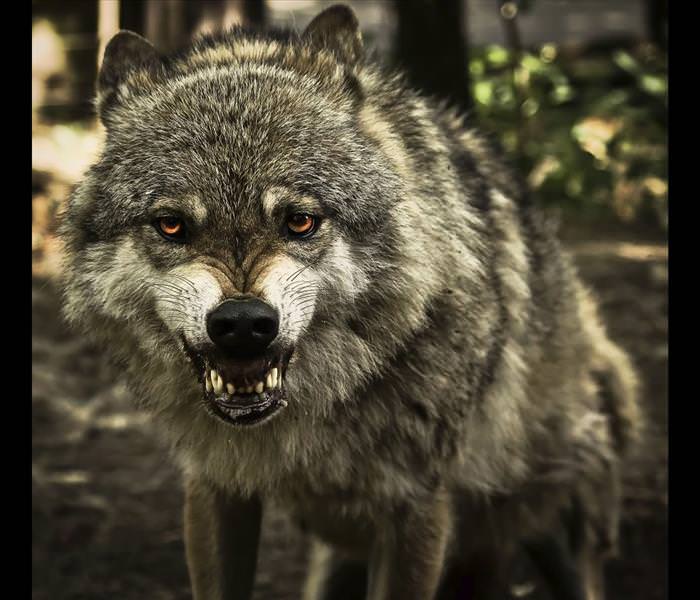 |
| This is the face many humans feared. But it is a beautiful photo of a beautiful, social and cunning animal. Estimates of the wolf population point to a population of 200,000 wolves world wide, spread over 57 countries. This compared to 10 times as much in earlier times. |
Submitted by: Rajesh Sourash